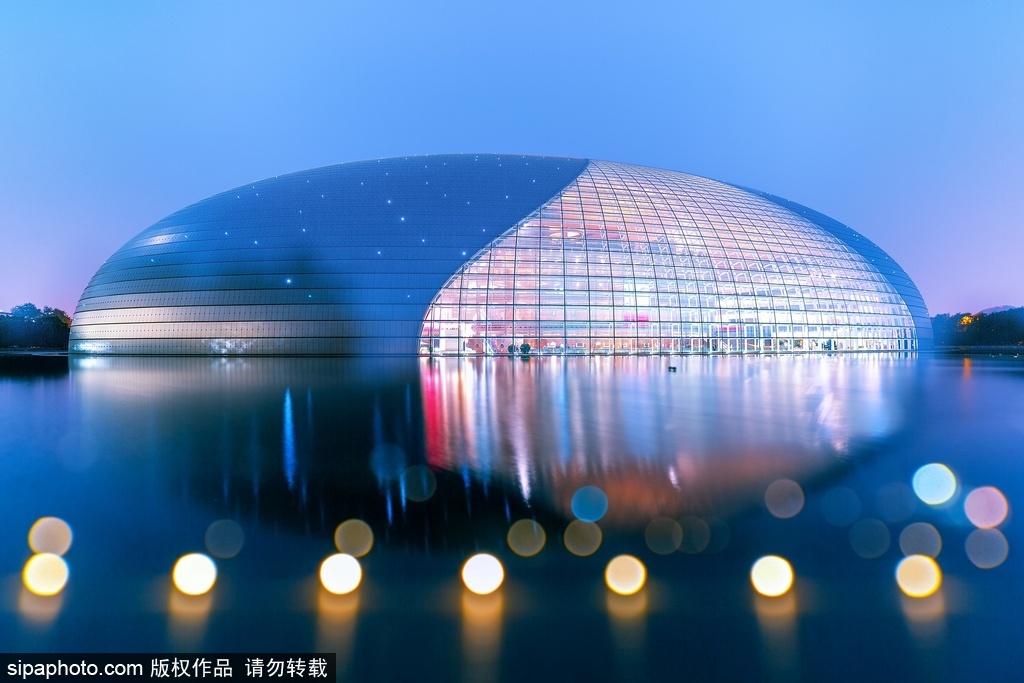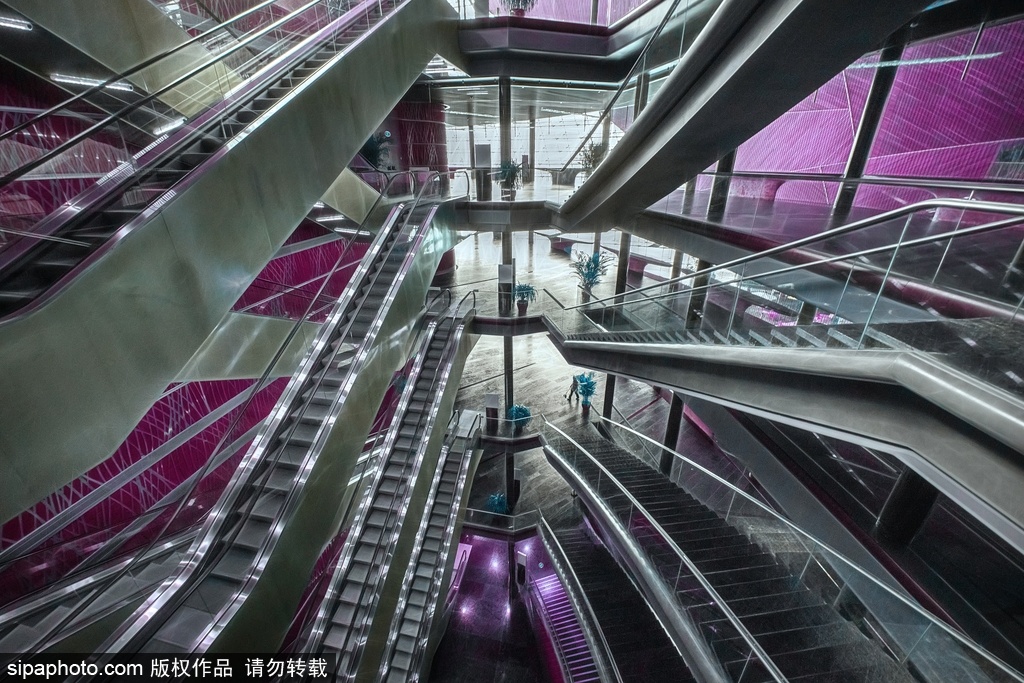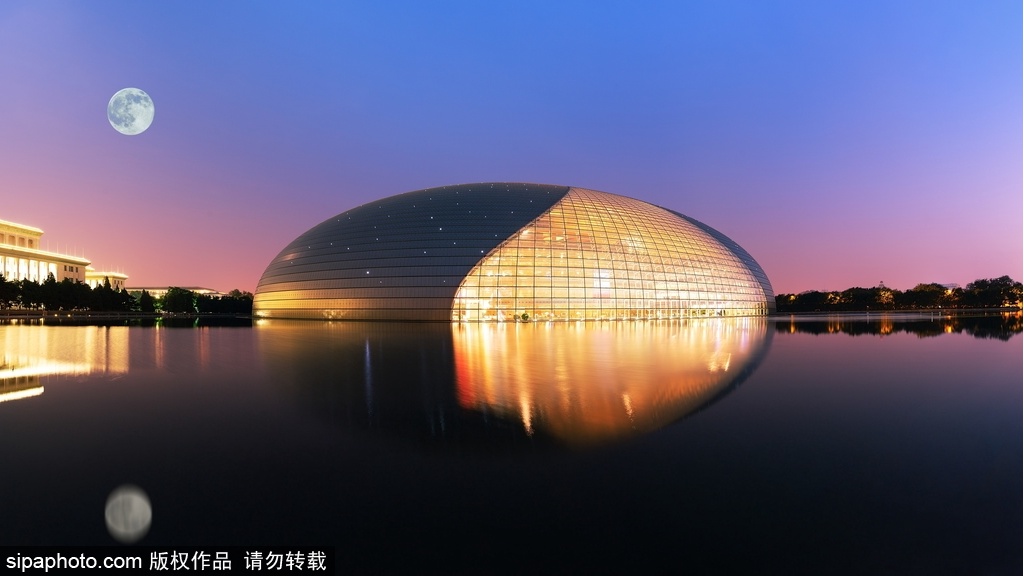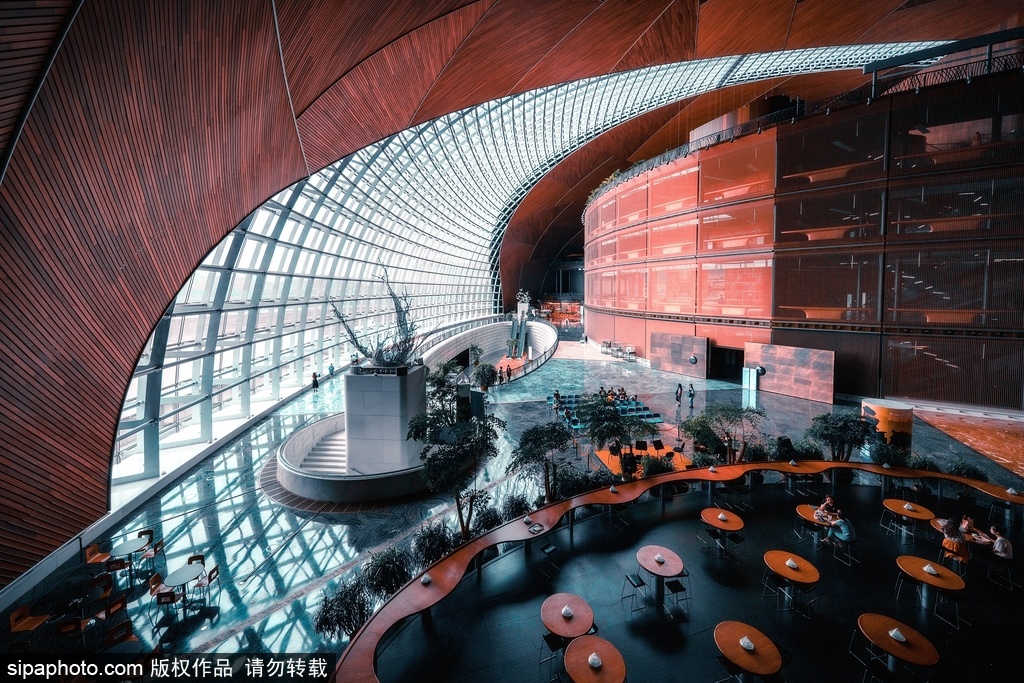
Key Words:Museum,
The National Centre for the Performing Arts (NCPA) is the top performing arts centre in China with its fabulous and international performances and stunning building.
Visit Ticket:CNY 30 for adults; CNY 15 for children under 3.9 feet (1.2m)
Combo Tickets: A: CNY 40 for 1 adult + 1 minor under 18 years old
B: CNY 65 for 2 adults + 1 minor under 18 years old
Note: Minors taller than 3.9 feet should provide a valid ID card.
Opening Hours:09:00-17:00, last entry at 16:30; closed on Monday except holidays.
Show Ticket Booking:
1. At the ticket office near the north gate: 09:30-18:00 for days without performances; 9:30-19:30 for days with performances
2. Hotline: +8610-66550000 (available between 09:30-19:30)
Description
The National Centre for the Performing Arts (NCPA) is the top performing arts centre in China with its fabulous and international performances and stunning building. It has become a new landmark building of Beijing since it was built.
The unique building designed by French architect Paul Andrew resembles a shell lying on a lake. In addition, the center has underwater corridors, an underground garage, an artificial lake and the green space. It covers an area of about 29 acres (about 12 hectares). The whole project started from December 2001. After more than 5 years' construction, it was finally completed in September, 2007. Now it is believed to be the deepest architecture in Beijing with the deepest point being -106.6 feet (-32.5 meters), equivalent to the height of a 10-floor building.
The theatre contains three auditoriums including the Opera House, the Concert Hall and the Theater where all kinds of performances like dramas, operas, dance shows and symphonies are staged frequently. Besides, various exhibitions and activities usually can be found here as well.
Symphonies, dance shows, ballets, dramas, operas and other kinds of performances are frequently staged in the National Centre of the Performing Arts. If time is allowed, you can enjoy any shows that you like. The NCPA visiting tour includes art exhibitions, thematic activities, as well as facilities. You will both appreciate the magnificent architectural style and enjoy the profound art environment of thematic exhibitions here.
Design

NCPA located on the south side of Chang'an Street, in the heart of Beijing. According to the requirements of Beijing's overall planning, the height of the NCPA cannot exceed the height of the Great Hall of the People (46 meters), but the functional requirements of the NCPA can not be load in the 46-meter space, so it can only develop underground. The underground depth of the NCPA is as tall as ten stories high, and 60% of the building area is underground. It is the most in-depth underground project of public buildings in Beijing. The deepest place is 32.5 meters, which is directly below the stage of the Opera hall. The 17 meters underground of the NCPA is the ancient river channel of the Yongding River in Beijing. The underground of the NCPA contains abundant groundwater. The buoyancy generated by this groundwater can support a giant aircraft carrier weighing 1 million tons. Such tremendous buoyancy is enough to hold up the entire theater. The traditional solution is to pump groundwater out continuously, but the result of pumping groundwater is that a 5-km-wide "groundwater funnel" will be formed underground near the theatre area, causing settlement of surrounding grounds, and even ground buildings may appear crack. To solve this problem, engineers and technicians have conducted a detailed investigation and used concrete to pour an underground wall from the highest water level of the groundwater to the 60-meter underground clay layer. This vast "bucket" formed by subterranean concrete walls can enclose the foundation of the NCPA. The water pump draws the water out of the "bucket" so that no matter how the water pumped in the foundation, the groundwater outside the "bucket" will not be affected, and the surrounding buildings will be safe.
The 6,750-ton steel beam frame made the largest dome. The structure of the NCPA is composed of a single curved steel beam. More than 18,000 pieces of titanium metal plate and more than 1,200 pieces of ultra-white transparent glass form a massive shell of 36,000 square meters. The world's largest dome is not supported by a pillar. The outer layer of the dome coated with nano materials, and when the rain falls on the glass surface, it will not leave water stains. At the same time, nanotechnology also dramatically reduces the adhesion of dust.
To test the noise generated by raindrops falling on the domes with ten football fields, the scientists conducted repeated experiments. Experiments have shown that if effective noise prevention is not carried out, the sound in the entire dome will be like a drum when the rain falls. The anti-noise problem between theater to theater and theater to outside is solved by the use of a technique called "sound gate".
NCPA is surrounded by an artificial lake, although the winter temperatures in Beijing sometimes fall below zero degrees Celsius and the lake does not freeze in the winter. It is achieved by the use of a closed circulation system, the constant temperature groundwater injected into the lake surface, so the water temperature of the artificial lake can be controlled above zero degrees in winter.
The Exterior - A Giant Oval Shell

The exterior of the National Centre for the Performing Arts, like a steel-structured oval shell, is an ingenious material integration of over 18,000 titanium plates and over 1,000 sheets of ultra-white glass, which creates a vivid visual effect as if the curtain is drawn apart slowly before your eyes. With the weight of 6,457 tons and the longest axis of 696 feet (212 meters), the steel-structured oval shell is the largest dome in the world at present. Surrounding the centre is a crystal-like artificial lake. By using high technology, it will not ice in winter and the algae won't grow in it in summer either. The National Centre for the Performing Arts and its reflection in water add radiance and charm to each other. All the passages and entrances are built underwater. When you walk into the center, a layer of water is above your head, which will also give you a special felling. Around the lake is a greenbelt, which does not charge fees from visitors. People wander there to feel the valuable tranquility in a busy city.
Three Performance Venues

The Opera House, the Concert Hall and the Theater are the three performance venues inside the center. They are separated houses, yet are connected by air corridors.
Opera House:
The Opera House with golden color as its main hue is the most magnificent building inside the National Centre for the Performing Arts. Operas, dance dramas, ballets, and large-scale shows stage here. It has 2,091 seats; and the tickets for standing room are also available. The arc-shaped metal-net wall of the auditorium allows lights and shadows changing according to the progressing of the performance. The audience can easily immerse themselves in the artistic atmosphere. The seamless ballet stage is believed to be the largest one in China, whose surface is made of Oregon timber. The three-layer structure of the stage gives it good resilience and provides the best protect to the dancers' feet.
Concert Hall:
By the east side of the Opera House sits the Concert hall where the large-scale symphonies and Chinese traditional music are performed. The silver white color makes it elegant and serene. Auditorium is around the stage, which makes it possible for the audience to enjoy performances from any angle. The ceiling of the hall rolling like waves is propitious to the diffusion of the sound. All the specialized designs realize the perfect integration between architectural and acoustic aesthetics. 1,859 seats are available here.
One thing cannot be missed that the pipe organ placed in the hall with 94 stops and an impressive array of 6,500 pipes is the largest one in Asia. It is the most valuable treasure in the Concert Hall.
Theater:
The design of the theater has a distinct Chinese traditional style, where traditional Chinese operas, stage plays and national songs and dances are performed. 957 seats are set here, excluding the orchestra. Zhejiang's silk on the walls are flameproof, full of strong Chinese traditional taste. The advanced stage can not only satisfy the special needs of Chinese traditional opera's performance but also highlight the closeness between the audience and the performers.
Cost

The initial planned cost of the theatre was 2.688 billion yuan. When the construction had completed, the total cost rose to more than CNY3 billion. The major cause of the cost increase was a delay for reevaluation and subsequent minor changes as a precaution after a Paris airport terminal building collapsed. The cost has been a major source of controversy because many believed that it is nearly impossible to recover the investment. When the cost is averaged out, each seat is worth about half a million CNY. The Chinese government answered that the theater is not a for profit venture.
The government sanctioned study completed in 2004 by the Research Academy of Economic & Social Development of the Dongbei University of Finance and Economics, of the upkeep costs of the building were publicized in domestic Chinese media:
The water and electricity bills and the cleaning cost for the external surface would be at least tens of millions CNY, and with another maintenance cost, the total could easily exceed one billion CNY. Therefore, at least 80 percent of the annual operational costs must be subsidized by the government for at least the first three years after the opening, and for the rest of its operational life, at least 60 percent of the annual operational cost must be subsidized by the government.
The director of the art committee of the National Centre for the Performing Arts and the standing committee member of the Standing Committee of the Chinese People's Political Consultative Conference, Mr Wu Zuqiang (吴祖强) and the publicist /deputy director of the National Centre for the Performing Arts Mr Deng (邓一江) have announced that 70 percent of the tickets would be sold at low price for ordinary citizens, while 10% of the tickets would be sold at relatively expensive prices for separate market segments, and the 60% of annual operating cost needed to be subsidized by the government would be divided between the central government and the Beijing municipal government.
Location
The location, immediately to the west of Tiananmen Square and the Great Hall of the People, and near the Forbidden City, combined with the theatre's futuristic design, created considerable controversy. Paul Andreu countered that although there is indeed value in ancient traditional Chinese architecture, Beijing must also include modern architecture, as the capital of the country and an international city of great importance. His design, with large open space, water, trees, was specially designed to complement the red walls of ancient buildings and the Great Hall of the People, in order to melt into the surroundings as opposed to standing out against them.
How to Get To National Centre for the Performing Arts
By Subway:
1. Take Subway Line 1 and get off at Tiananmen Xi Station. Get out from Exit C. There is an underground passage to the theater directly.
2. Take Subway Line 2 and get off at Hepingmen Station. Get out from Exit B1. Or get off at Qianmen Station and get out from Exit C.
By Bus:
1. Take bus 52 and get off at Shibei Hutong Station.
2. Take bus 1, 5, 52, 99, or Sightseeing Bus 1 or 2 and get off at Tiananmen Xi Station.



